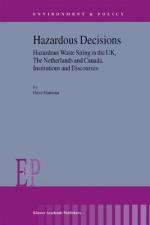|
This section contains 896 words (approx. 3 pages at 300 words per page) |

|
Developing a safe and reliable method for disposing of radioactive wastes is one of the chief obstacles to broader applications of nuclear power. Nearly a half century after the world's first nuclear reactor was opened, the United States still had no permanent method for the isolation and storage of wastes that may remain dangerously radioactive for thousands of years. Scientific disputes, technical problems, and political controversies have slowed the pace at which waste disposal systems can be studied and built. The history of the Waste Isolation Pilot Plant (WIPP), located near Carlsbad, New Mexico, is an example of how difficult the solution to this challenge can be.
WIPP was designed by the U.S. Department of Energy (DOE) in the 1970s to test methods for isolating and storing low- and intermediate-level and transuranic radioactive wastes. (Transuranic wastes are produced mainly by nuclear...
|
This section contains 896 words (approx. 3 pages at 300 words per page) |

|


